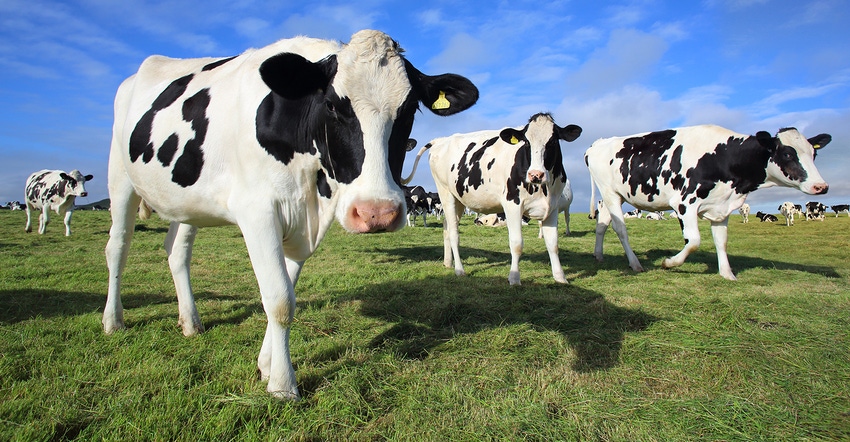
In action March 29, USDA published the highly anticipated Origin of Livestock final rule for organic dairy. USDA says this change to the USDA organic regulations will promote a fairer and more competitive market for all organic dairy producers, by making sure that certified USDA organic dairy products are produced to the same consistent standard.
“This action demonstrates the USDA’s strong commitment to America’s organic dairy farmers,” says Agriculture Secretary Tom Vilsack. “The Origin of Livestock final rule provides clear and uniform standards about how and when livestock may be transitioned to organic dairy production, and how transitioned animals are managed within the organic dairy system. Now, all organic dairy livestock producers will have the confidence and certainty they are operating in a fair and competitive market.”
USDA’s National Organic Program will oversee the new rule, which in general allows a dairy livestock operation transitioning to organic, or starting a new organic farm, to transition non-organic animals one time. It also prohibits organic dairies from sourcing any transitioned animals. Once a dairy is certified organic, animals must be managed as organic from the last third of gestation. Variances may be requested by small businesses for specific scenarios.
Organic dairy rules have provisions known as ‘Origin of Livestock’ – these provisions determine which animals can be considered organic and produce organic milk. The National Organic Coalition says the ‘Origin of Livestock’ loopholes have been a longstanding problem, causing economic distress for family-scale organic dairy producers. A rule to close these loopholes was first proposed in 2015, but USDA delayed finalizing the rules for many years despite advocacy from NOC and the organic community and a direct mandate from Congress for their completion.
“Consumers of dairy that carry the USDA Certified Organic Seal can trust that those products meet their expectations for how organic dairy products are produced,” adds Under Secretary for Marketing and Regulatory Programs Jenny Lester Moffitt. “At the same time, the rule announced also ensures new organic producers have a fair way to enter the market.”
The final rule requires that milk and milk products come from dairy animals that have been managed as organic since before birth, with a one-time exception for the transition of a conventional dairy herd to organic production under a specific set of conditions. Once the transition has been made, an operation can expand an organic dairy herd by adding animals that have been organically managed from before birth (from the last third of gestation). The operation cannot source transitioned animals from another operation.
The National Organic Coalition had strongly urged USDA to prevent transitioned animals from being sold to other operations as organic livestock because this creates a loophole that can be exploited to undercut operations that manage animals organically from before birth.
“The Biden administration and Secretary of Agriculture, Tom Vilsack, have delivered a win for organic dairy producers, who have suffered too long due to inconsistent enforcement,” says Abby Youngblood, executive director of the National Organic Coalition. “This final rule will provide a framework to crack down on bad actors and will give the USDA National Organic Program the tools to prevent the egregious abuses that have harmed family organic dairy producers.”
Ed Maltby, executive director of Northeast Organic Dairy Producers Alliance, called the move a win for dairy producers and all those who care about the integrity of the organic program. “The new rule closes the loopholes that have given some operations an unfair advantage. The rule is meaningful and essential to protect the livelihoods of family-scale organic dairy producers,” Maltby says.
Organic Valley applauds and welcomes the long-awaited announcement by USDA. The USDA’s action falls in line with the thousands of public comments supporting the agencies narrowing of permissible organic dairy transitioned approaches. The Organic Valley cooperative has been a leading voice and commented in the past three comment periods and had our board chair Steve Pierson testify on the topic in 2019 in front of the U.S. House Agriculture subcommittee for Biotechnology, Horticulture, and Research.
“Origin of livestock has been a long-standing priority for Organic Valley. Our farmers have been disadvantaged by the lack of consistency on origin of livestock for the last 20 years,” says Organic Valley Board President and farmer-member Steve Pierson. “This is a priority that we have led nationally and over the last seven years, and while the regulation isn’t perfect, I am encouraged that there is finally some progress from the USDA on a vital aspect of the organic program.”
About the Author(s)
You May Also Like






